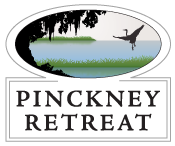Lowcountry Picked As Top Destination
National Geographic Traveler presents 2015’s must-see places. Whether it’s India’s literary hub or Switzerland’s mountain majesty, these 20 go-now destinations will send you packing.
Cruise highway 278, the main road on South Carolina’s Hilton Head Island, and it may seem that little has changed in the 59 years since entrepreneur Charles Fraser developed this sultry Lowcountry sea island as one of America’s first “eco-planned” resorts. But visitors are beginning to learn that some of the most important chapters of American history took place here, right beneath their vacation-tanned feet. Take Mitchelville, for instance, a settlement established by freed slaves in 1862, a year before the Emancipation Proclamation. On St. Helena, the Penn Center stands as one of the first schools in the South to educate Gullah people.
These spots surprise and intrigue visitors, who arrive knowing little, if anything, about them. Why? “Well, who writes history?” Joyce Wright asks rhetorically, eyebrows arched. Wright is executive director of Mitchelville Preservation Project, one of the member organizations in the Gullah Geechee Cultural Heritage Corridor. Here, visitors experience Gullah culture through storytelling, sweetgrass basket weaving, and sampling traditional food. Though the corridor cuts through the Carolinas, Georgia, and Florida, Hilton Head and St. Helena are the heart of living Gullah culture, where once forgotten stories find voice. —Julie Schwietert Collazo, @CollazoProjects
Travel Tips
When to Go: March 9-14, 30th Annual Hilton Head Island Wine and Food Festival; late May, 29th Annual Original Gullah Festival, Beaufort; October 12-19, 10th Annual Historic Bluffton Arts and Seafood Festival, Bluffton; November 6-9, Penn Center Heritage Days celebration of Gullah culture, music, and art, St. Helena Island
How to Get Around: A car is required to visit the Sea Islands and Gullah Geechee Cultural Heritage Corridor sites in South Carolina (extending north and south of U.S. 17 along the Atlantic Coast and 30 miles inland). St. Helena Island and Hilton Head Island are located east of I-95, between Charleston, South Carolina, and Savannah, Georgia. There are international airports in both cities, as well as a regional airport on Hilton Head. Rent a car at any airport. From I-95, take exit 33 for Beaufort and St. Helena, and exit 8 for Hilton Head.
Where to Stay: Beaufort is a convenient home base since it’s only five miles west of St. Helena and less than 35 miles north of Hilton Head. The city’s National Historic Landmark district is home to numerous bed and breakfasts, including the Rhett House Inn, a restored antebellum manor house and celebrity favorite (past guests include Tom Hanks and Barbra Streisand). There are ten guest rooms in the main inn, seven rooms with gas fireplaces and private patios or decks across the street in the Cottage (built in 1864 as one of the first southern schools/stores for freed slaves), plus the two-bedroom Newcastle House overlooking the gardens. Rates include a full breakfast, and the option to create an all-southern plate: eggs, biscuits, grits, country ham, and a tall glass of sweet tea.
Where to Eat or Drink: Dye’s Gullah Fixin’s is as close as it gets to eating in a Gullah grandma’s kitchen. Dye Scott-Rhodan is the chef, and her relatives—including a ten-year-old niece—pitch in as servers at the small restaurant. Hours are limited and reservations are required, but it’s worth the minor hassle to reserve a seat at Dye’s table. Try authentic Gullah dishes such as “old fashion church tater salad,” “okra matoes stew,” and the specialty of the house, Malaysia “sweet tater” bread pudding.
What to Buy: On South Carolina rice plantations, hand-woven sweetgrass baskets were used as sieves to separate seed from chaff. Today, local weavers craft and sell the sweet-smelling, coiled baskets (available in various sizes and designs) daily at the historic Charleston City Market and regularly on St. Helena Island at venues such as the Penn Center and the Red Piano Too Art Gallery.
What to Read Before You Go: Pat Conroy’s memoir The Water Is Wide (Dial Press Trade Paperback, reprint, 2002) chronicles his year spent teaching Gullah children in a one-room schoolhouse on Daufuskie Island, South Carolina (fictionalized as Yamacraw in the book).
Helpful Links: Hilton Head Island, Gullah Community, Gullah Geechee Cultural Heritage Corridor
Fun Fact: The Gullah/Geechee people living in the Lowcountry and Sea Islands are descendants of enslaved West and central Africans forced to work on coastal rice plantations. The isolation of the Sea Islands enabled the Gullah/Geechee to develop a separate Creole language and distinct culture from African Americans living in other parts of the United States.
Insider Tip From Julie Schwietert Collazo: The annual Gullah Celebration is held in February. The monthlong festival showcases music, food, and arts.

